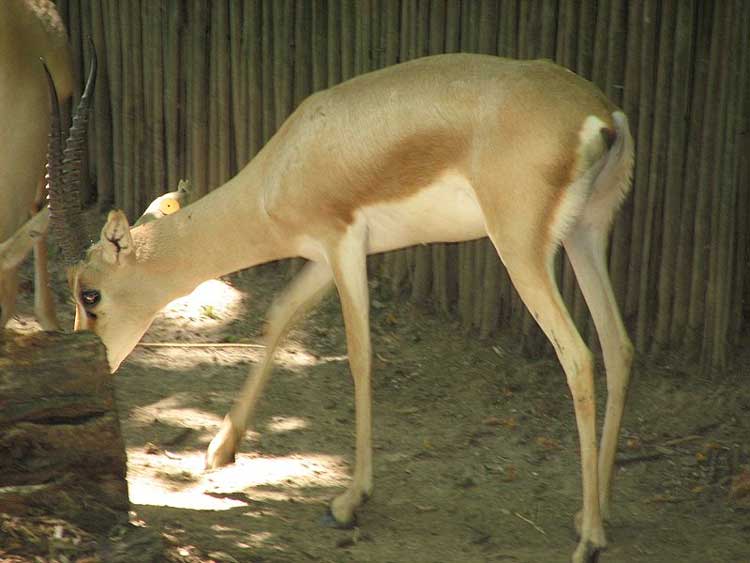Gazella leptoceros Cladus: Eukaryota Name Gazella leptoceros (F. Cuvier, 1842) References * Gazella leptoceros on Mammal Species of the World. Vernacular names ----------- The Rhim Gazelle (Gazella leptoceros), also known as the Slender-horned Gazelle or the Sand Gazelle, is a slender-horned gazelle, most adapted to desert life. There are less than 2500 in wild. The palest of the gazelles, this animal has adapted to desert life in many ways. Their pale coat reflects the sun's rays instead of absorbing them, and their hooves are slightly enlarged to help them walk on the sand, although occasionally they occupy stony regions. The horns on the male are slender and slightly S-shaped, and the horns donned by the female are even thinner and lighter, and they don't curve as drastically. Habitat The Rhim or Rheem Gazelle is found in isolated pockets across the central Sahara Desert (Kingdom 1997, Spinage 1986). The extreme heat of this environment limits their feeding to the early morning and evening and G. leptoceros gains most of its water requirements from dew and plant moisture, relying little on open water sources. It is a nomadic species moving across its desert range in search of vegetation, though it does not have a set migratory pattern (East 1997, Kingdom 1997). Endangered by the early 1970's, this species of gazelle was in serious decline. They were hunted firstly by mounted then by motorized hunters for sport, meat or their horns which were sold as ornaments in North African markets. Rhim Gazelle in philately The Libyan Posts (GPTC General Posts and Telecommunications Company) in cooperation with World Wide Fund for Nature, issued a set of four postage stamp illustrating the Gazella leptoceros on February 1, 1987.[1] References * Antelope Specialist Group (1996). Gazella leptoceros. 2006. IUCN Red List of Threatened Species. IUCN 2006. www.iucnredlist.org. Retrieved on 10 May 2006. Listed as Endangered (EN C1+2a v2.3) 1. ^ Libyan Stamps online Source: Wikispecies, Wikipedia: All text is available under the terms of the GNU Free Documentation License |
|


